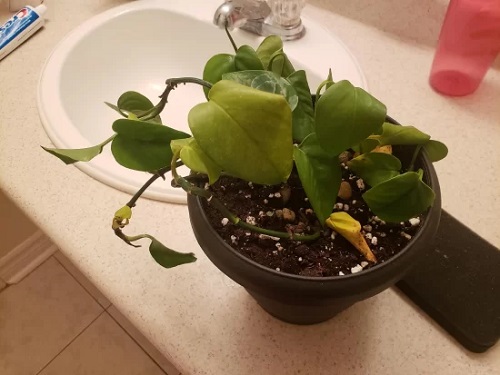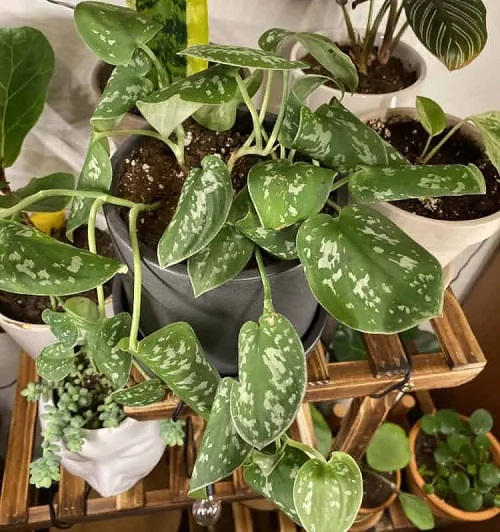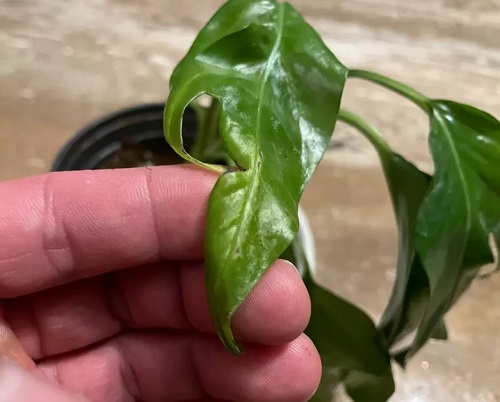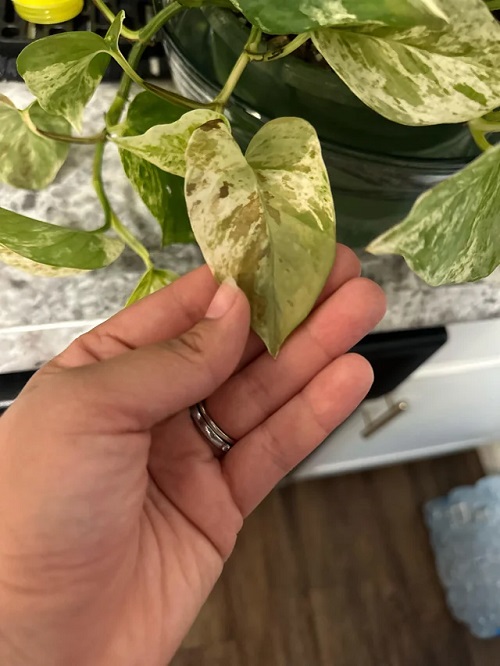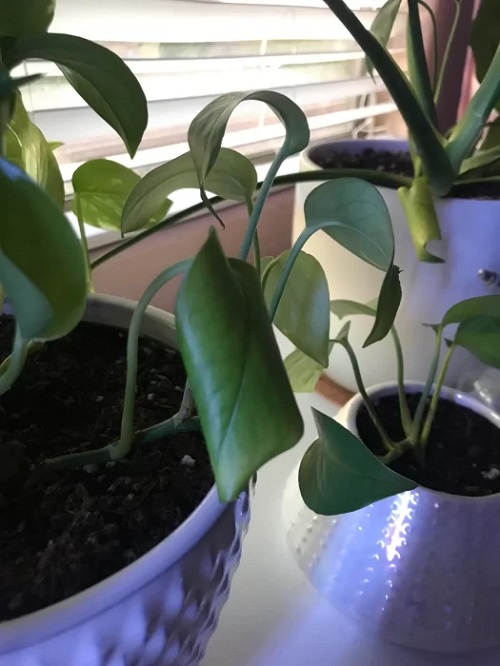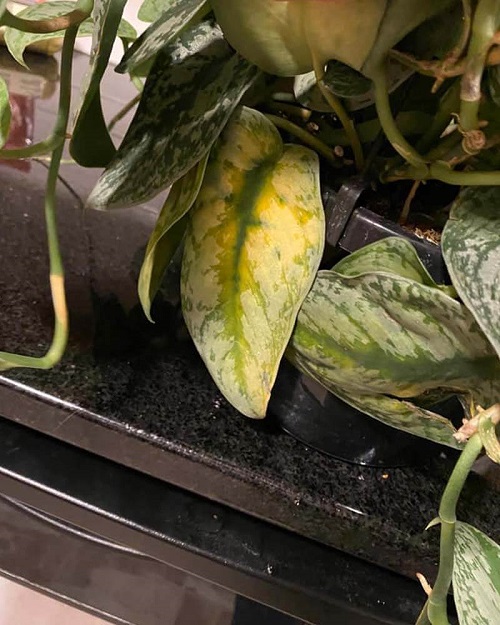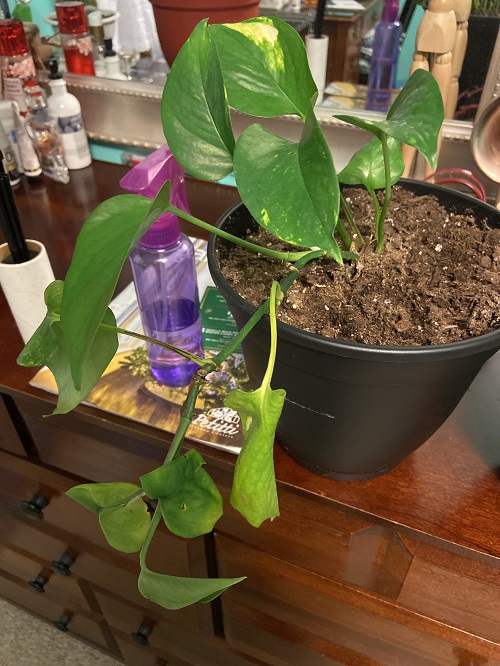Worried about Pothos Leaves Curling? Discover the exact reasons and solutions to prevent this serious plant problem.
Curled pothos leaves not only affect the beauty of this houseplant, but this can be a harbinger of something serious. What can it be–find out in this checklist and determine what to do to save your plant.
14 Cool Pothos Ladder Ideas for Small Spaces
Pothos Leaves Curling: Reasons and Solutions
1. Inadequate Lighting
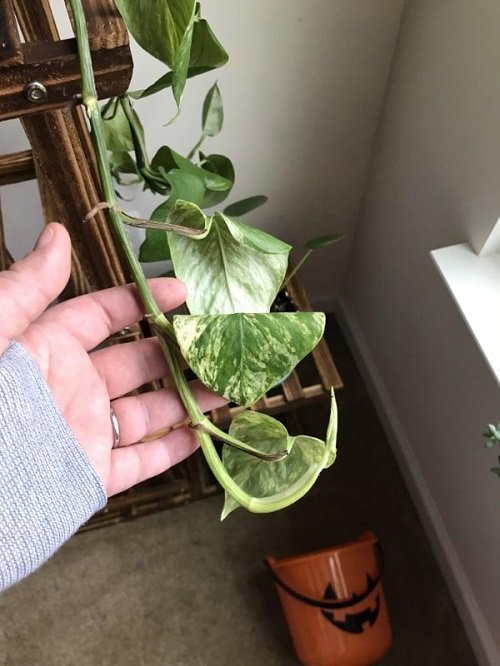
- Reason: Pothos are relatively undemanding when it comes to light, but they require an adequate amount to grow optimally. When placed in extra low-light conditions, they may struggle to photosynthesize effectively, causing the leaves to curl as a sign of stress.
- Solution: Pothos thrive when they receive bright, indirect sunlight (4-5 hours daily). This means placing them near a window with filtered light or somewhere like that is the best idea.
10 Top Tips on How to Turn Leggy Pothos Plant Bushier
2. Overwatering
- Reason: Overwatering is a common issue among plant enthusiasts, and it can be particularly detrimental to pothos. Excess water in the soil leads to a lack of oxygen in the root zone, which can result in root rot. As the roots deteriorate, they cannot supply nutrients to the leaves, causing them to curl and turn brown.
- Solution: To prevent overwatering, let the top of the soil dry out between watering spells. Pothos are forgiving plants, so it’s better to underwater rather than overwater.
3. Underwatering
- Reason: Inadequate watering can also cause leaves to curl due to water stress. When the plant doesn’t receive enough moisture, it conserves water by curling its leaves.
- Solution: To avoid underwatering, monitor the moisture level in the soil. Water your pothos when the top inch of the soil feels dry to the touch. Be consistent in your watering routine, but never let your plant sit in standing water, as this can lead to root rot.
Look out for these 5 Sure Shot Signs of Underwatered Plants
4. Potassium Deficiency
- Reason: Nutrient deficiency, particularly lack of potassium, can cause hypokalemia, and you see yellow leaves along the leaf margins and between the veins and sometimes pothos leaves curling.
In addition to potassium, other nutrient deficiencies, such as nitrogen, magnesium, and calcium, can also cause leaf curling and other symptoms.
- Solution: To address nutrient deficiencies, provide your pothos with a balanced, water-soluble fertilizer once in 4-6 weeks after diluting it to 1/2 of the recommended strength on the packet. Do not feed the plant in winter if you don’t live in a frost free climate.
5. Dry Air
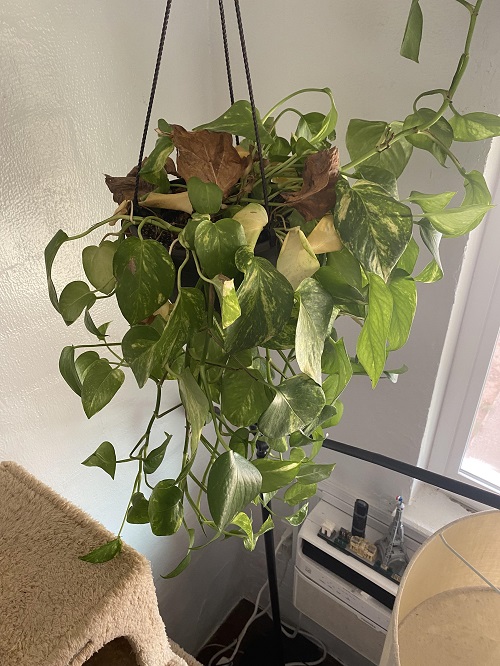
- Reason: Pothos plants appreciate moderate humidity levels, and only when the air is way too dry, their leaves may curl in response to the lack of moisture.
- Solution: It’s not always required but if you notice dry air in your home, Increase humidity around your pothos.
Here are 10 Ways To Increase Humidity For Houseplants That Work
6. Root-Bound Plant
- Reason: When the root system becomes root-bound, the plant’s roots are constricted, limiting their ability to access nutrients and water. As a result, the leaves may curl due to stress.
- Solution: Re-pot your pothos into a larger container when you spot the roots on the topsoil or see them coming out from the drainage hole at the bottom of the pot. Always go for a one-size bigger container than the old one.
7. Pest Infestation
- Reason: Common pests such as spider mites, mealybugs, or aphids can infest pothos, causing stress and leading to leaf curling.
- Solution: Regularly inspect your pothos for signs of pests, including webbing, white cottony masses, or tiny insects. If you spot any pests, treat your plant with an insecticidal soap or neem oil. Isolate the infested plant to prevent the pests from spreading to other nearby plants.
40 Best Organic Pest Control Approaches Every Gardener Should Know
8. Temperature Fluctuations
- Reason: Rapid temperature changes or prolonged exposure to cold drafts can stress your pothos, resulting in leaf curling. Pothos are tropical plants and prefer a stable, warm environment.
- Solution: Keep your pothos in a stable temperature range between 60-85°F (17-31°C). Avoid placing it near drafty windows, air vents, or doors that may expose it to cold or hot temperatures. Ensure your plant is protected from sudden temperature fluctuations.
How Cold Can Pothos Tolerate | Pothos Cold Tolerance
9. Overcrowding
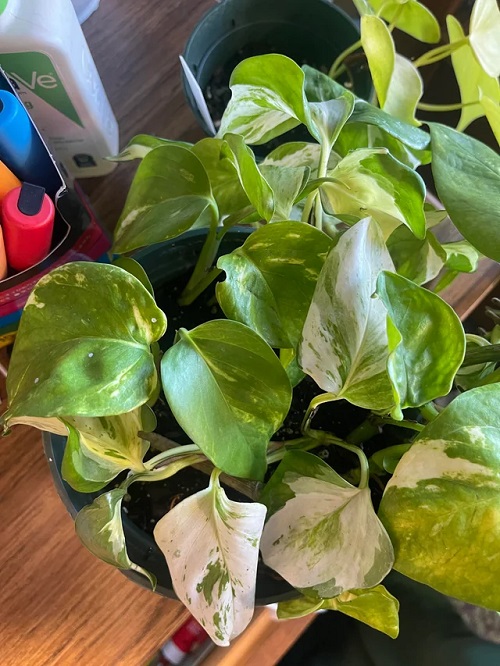
- Reason: Overcrowding can create competition for resources and limit air circulation, contributing to stress that leads to leaf curling.
- Solution: Dividing and pruning your pothos to maintain healthy spacing between stems is essential. Remove unhealthy or dead growth to promote better air circulation and allow your plant to thrive without resource constraints. Also, do not plant multiple plants together in a small space.
11 Most Common Pothos Plant Problems and Their Solutions
10. Diseases
- Reason: Fungal or bacterial diseases can significantly affect your plant’s health, leading to leaf issues such as curling.
- Solution: If you suspect a disease, isolate the infected plant immediately to prevent the pathogen’s spread. Trim affected leaves and provide good air circulation by avoiding overcrowding and overhead watering. Properly dispose of any trimmed material to prevent reinfection.
11. Excessive Fertilization
- Reason: Over-fertilizing your pothos can disrupt the delicate nutrient balance in the soil, resulting in leaf curling and other problems.
- Solution: Less is often more when it comes to feeding houseplants. Fertilize sparingly (Once in 5-7 weeks with a 1/2 strength balanced liquid fertlizer. Not more than this), and avoid using high-concentration fertilizers.
Here are Top Overfertilization Symptoms in Indoor Plants and Solutions
12. Water Quality
- Reason: Pothos can be sensitive to tap water containing high chlorine and fluoride levels. These minerals may lead to leaf curling.
- Solution: Use filtered, RO, or distilled water for your pothos, or allow tap water to sit overnight before watering your plant. This resting period allows the chlorine to evaporate, making the water safer for your pothos.
13. Physical Damage

- Reason: Accidental damage to leaves or stems can lead to curling as the plant tries to recover from the injury.
- Solution: Handle your pothos with care and caution. Trim affected parts with clean, sharp scissors or pruning shears if damage occurs. Proper pruning will encourage the plant to focus its energy on healthy growth.
14. Inadequate Support

- Reason: Long, trailing vines without proper support can become stressed due to their weight, leading to leaf curling.
- Solution: Provide adequate support for the trailing vines using stakes, trellises, bamboo or moss poles, or any other supporting structures. This will help the plant grow vertically and reduce the stress that leads to curling leaves.
18 Fantastic Pothos Trellis Ideas You Can Easily Make
15. Aging Leaves
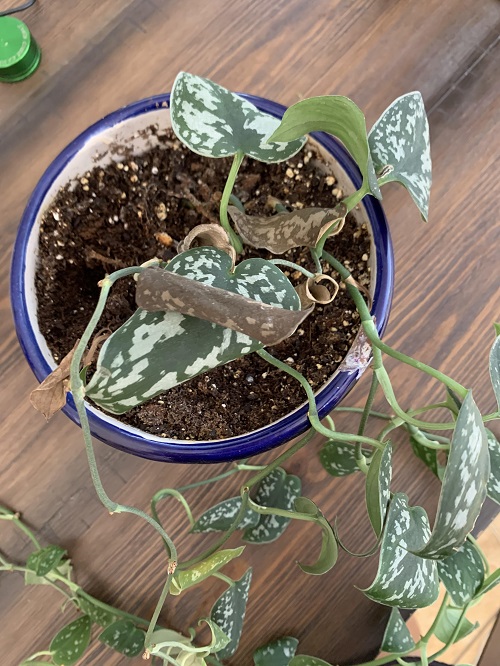
- Reason: As pothos leaves age, they naturally curl and eventually fall off. This is a normal part of the plant’s growth cycle.
- Solution: Regularly trim and remove older, curled leaves to redirect the plant’s energy towards new growth. Pruning also helps maintain the plant’s aesthetic and prevents it from wasting resources on otherwise dying leaves.

